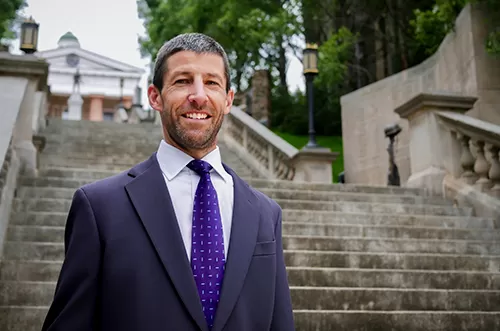Emerald Point, LLC v. Hawkins, 294 Va. 544, 808 S.E.2d 384 (2017)
Plaintiff tenants lived in an apartment unit located in the Emerald Point Apartments in Virginia Beach (the “City”), which was managed by the Breeden Company, Inc. (“Breeden”) for the owner, Emerald Point, LLC. The unit was heated by a natural gas furnace. On the evening of November 26, 2012, the alarm in the carbon monoxide detector in the unit sounded. A maintenance worker sent by Breeden replaced the batteries in the device. Shortly after he left, the alarm sounded again.
One of the tenants called Virginia Natural Gas (“VNG”), who sent an inspector to the apartment. The inspector discovered carbon monoxide (“CO”) levels that were considered hazardous, turned off the furnace, and “red tagged” it as the suspected source of the CO leak. Breeden then sent a maintenance worker to assess the problem. The maintenance worker found a vent pipe in the attic to be loose and reattached and secured it with zip screws, which is contrary to manufacturer specifications. The maintenance worker was not licensed to make repairs at the time. A code enforcement officer from the City arrived and also determined the CO levels were within the acceptable range after repairs. He did not however go into the attic or otherwise inspect the furnace. The City official permitted the removal of the red tag.
On January 4, 2013, the alarm in the apartment’s carbon monoxide detector sounded again. This time, Breeden hired a contractor to replace the furnace. However, the CO levels did not improve upon installation of the new furnace. Further inspection of the attic above the apartment resulted in the discovery that the flue of the furnace in the adjoining apartment was not properly connected and was venting exhaust into the attic. When this flue was repaired, CO levels returned to an acceptable level.
Tenants sued on a premises liability action against their landlord and its management company, for injuries alleged to have been caused by CO poisoning. The trial resulted in a jury verdict in the tenants favor. Defendants appealed the decision on six assignments of error.
The Court recognized that, in interrogatories, the landlord had requested that the tenants identify each expert who they expected to testify at the trial and state the substance of the facts and opinions to which each would be expected to testify and give a summary of the factual basis supporting each opinion. Allan Lieberman, M.D., was designated as an expert witness for tenants. In a post-trial order, the circuit court memorialized its prior rulings on objections raised by the landlord to various statements in Dr. Lieberman’s testimony. The landlord contended that the circuit court abused its discretion in determining that certain facts and opinions presented by Dr. Lieberman were adequately disclosed during interrogatories. The Supreme Court agreed, ruling that the previously undisclosed opinions of the expert witness were prejudicial to the landlord during trial. It found reason to set aside the jury’s verdict on this conclusion alone, however proceeded to examine the remaining assignments of error in order to resolve issues that were likely to arise in the new trial on remand.
The tenants had sought a jury instruction which would have directed the jury to accept as an undisputed fact that the furnace had a burned-through combustion chamber and that this had been the principal source of CO entering their apartment. However, after the furnace had been removed by the landlord, it sat in a maintenance bay for over a year before it was later disposed of well before the November 2014 date when the complaint was filed. Therefore, there was no evidence to support the claim being presented in the jury instruction. While the circuit court declined to make such an instruction, it did give a spoliation instruction which indicated to the jury that it could infer that the evidence of the furnace would have been detrimental to the case of the party who disposed of it.
The Supreme Court looked to F.R.C.P. 37(e)(2)(B) as authority on this question. The statute requires a finding by the court that a party acted with intent to deprive another party of the use of information before an adverse inference instruction may be given to the jury. The Court looked to Advisory Committee Notes in order to determining that the entailed standard is applicable to all forms of spoliation evidence in Virginia. Thus, it held that the circuit court erred in granting a spoliation instruction in this case.
The Supreme Court also excluded the testimony of Alan Moore, an inspector for the City, regarding the installation of the new furnace. The Supreme Court held that the testimony was prejudicial because it involved matters collateral to the determination of the landlord’s liability for the tenants’ injuries, because the alleged injuries were suffered prior to the installation. The Supreme Court further ruled that amendment of ad damnum prayers after the close of all the evidence denied the defense a fundamental understanding of the issues in the case and so was impermissible. However, it held that plaintiffs could amend their ad damnum upon remand and commencement of a new trial.




